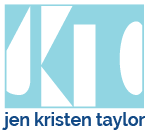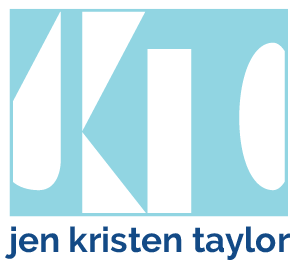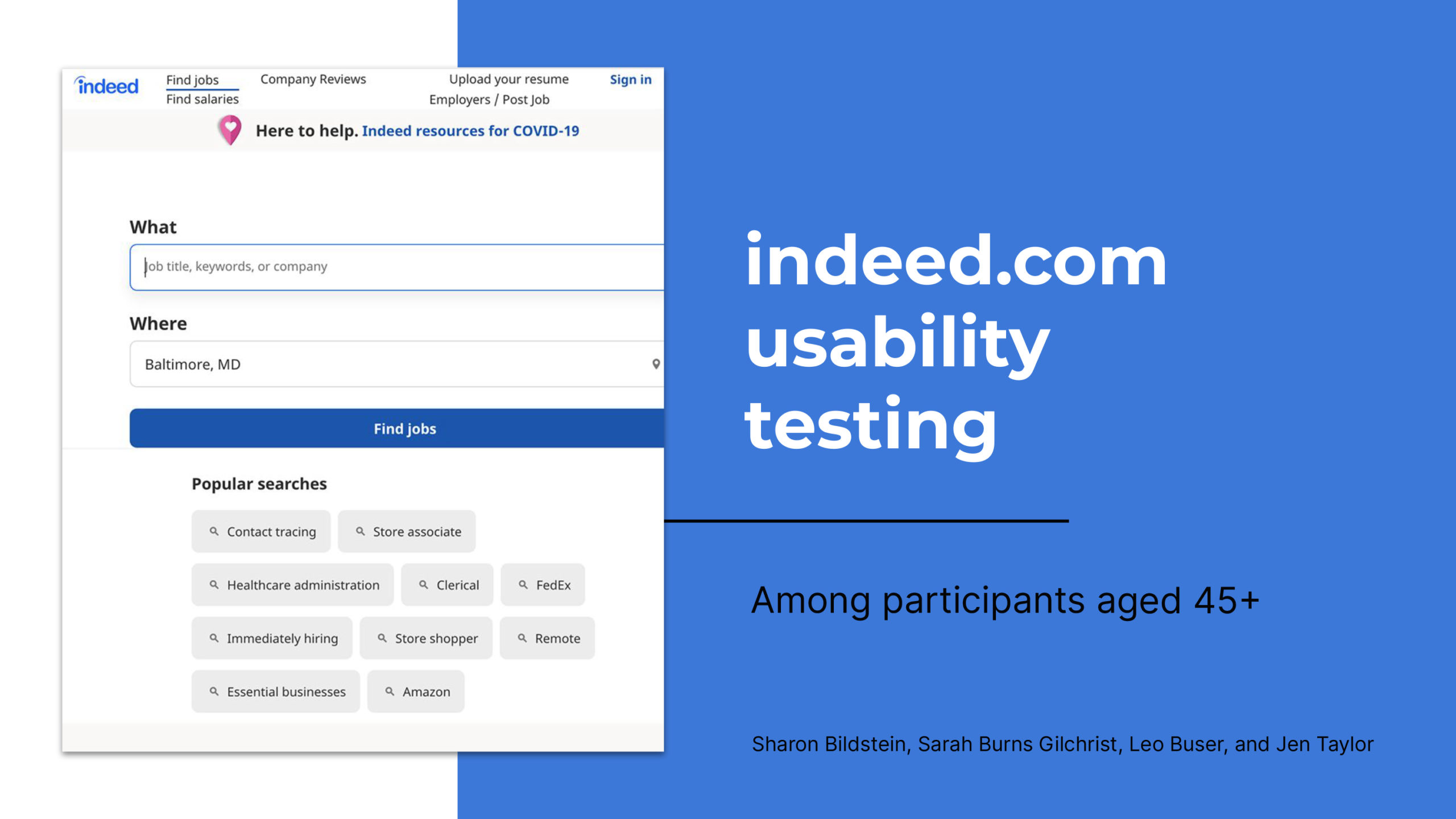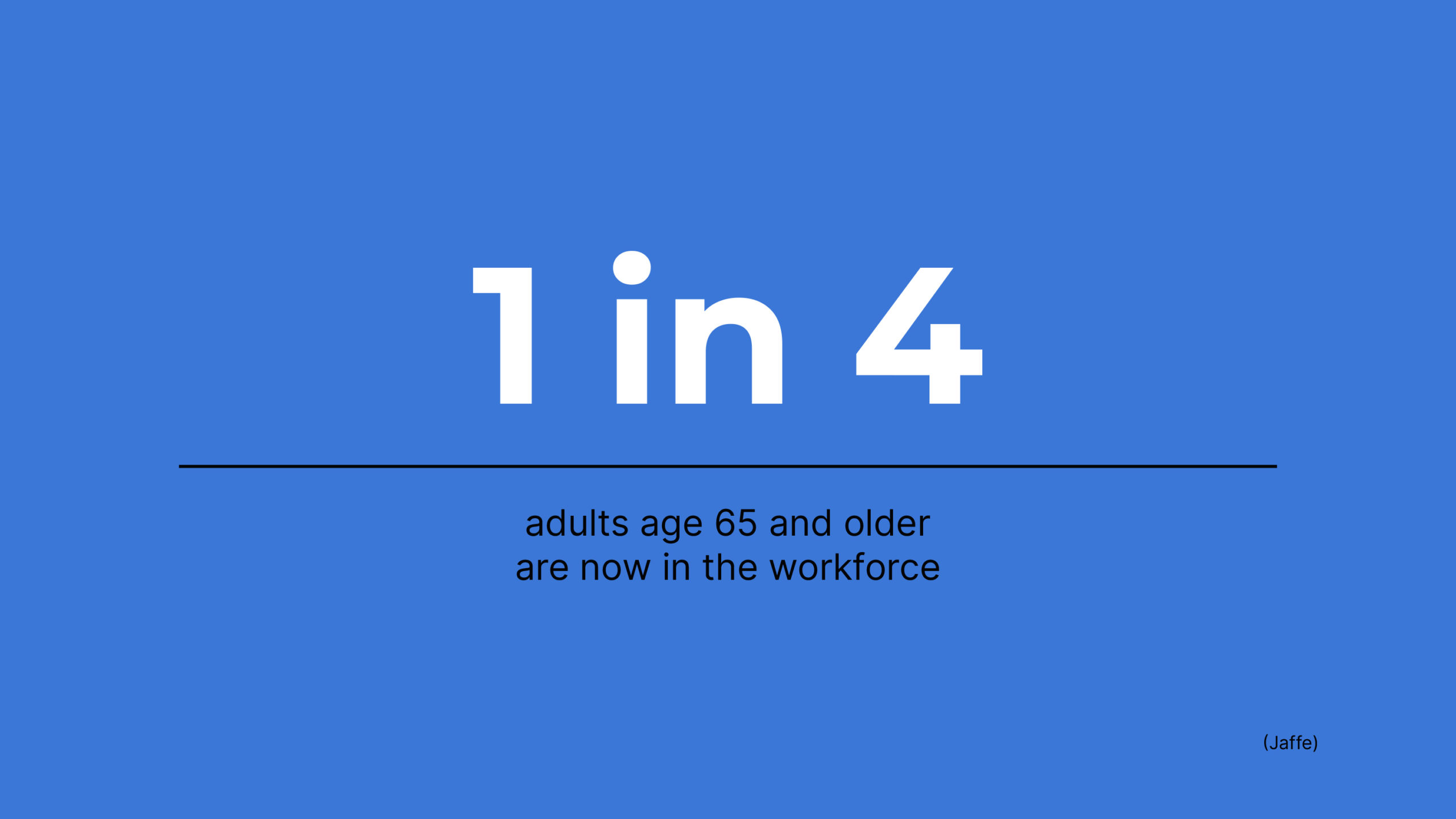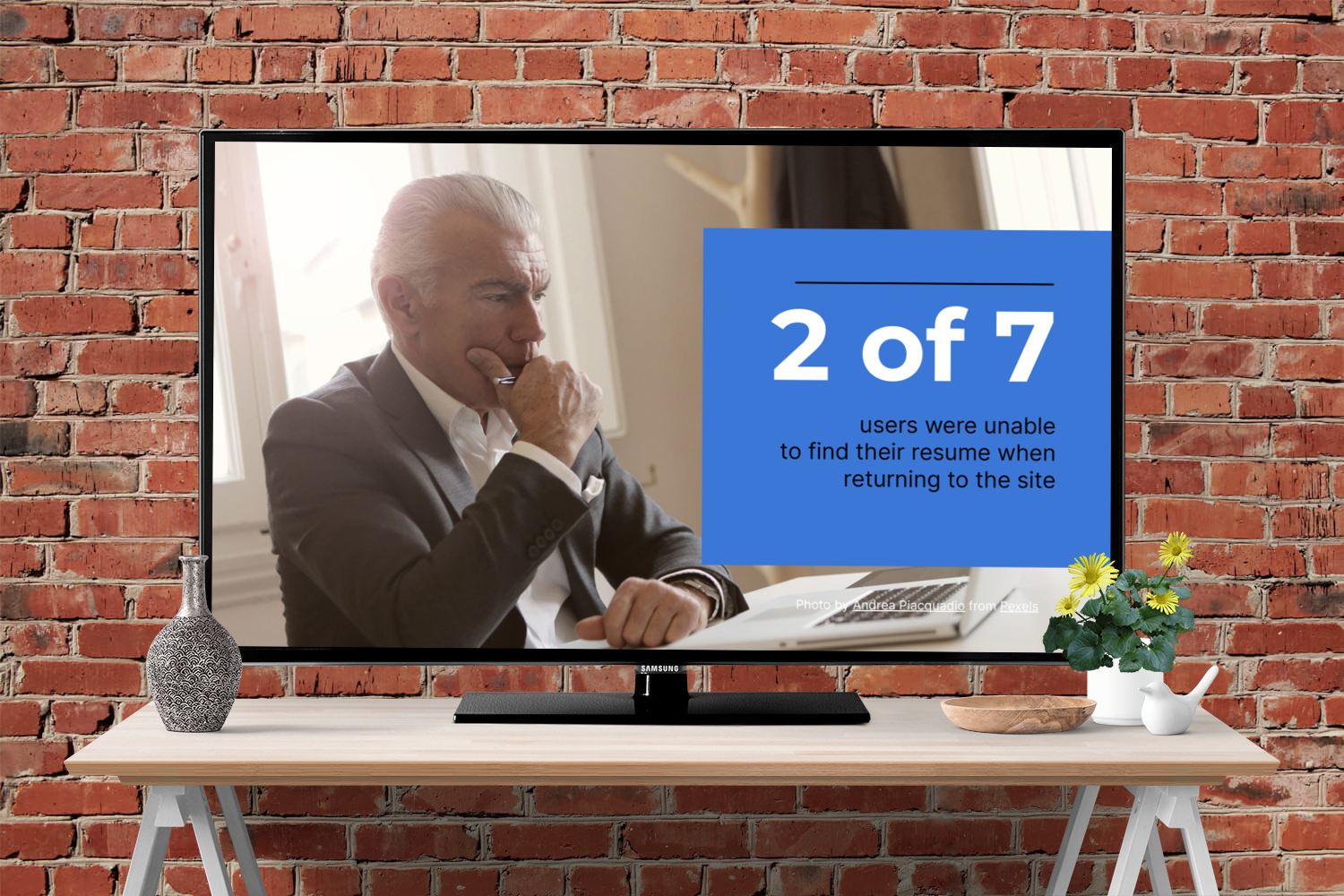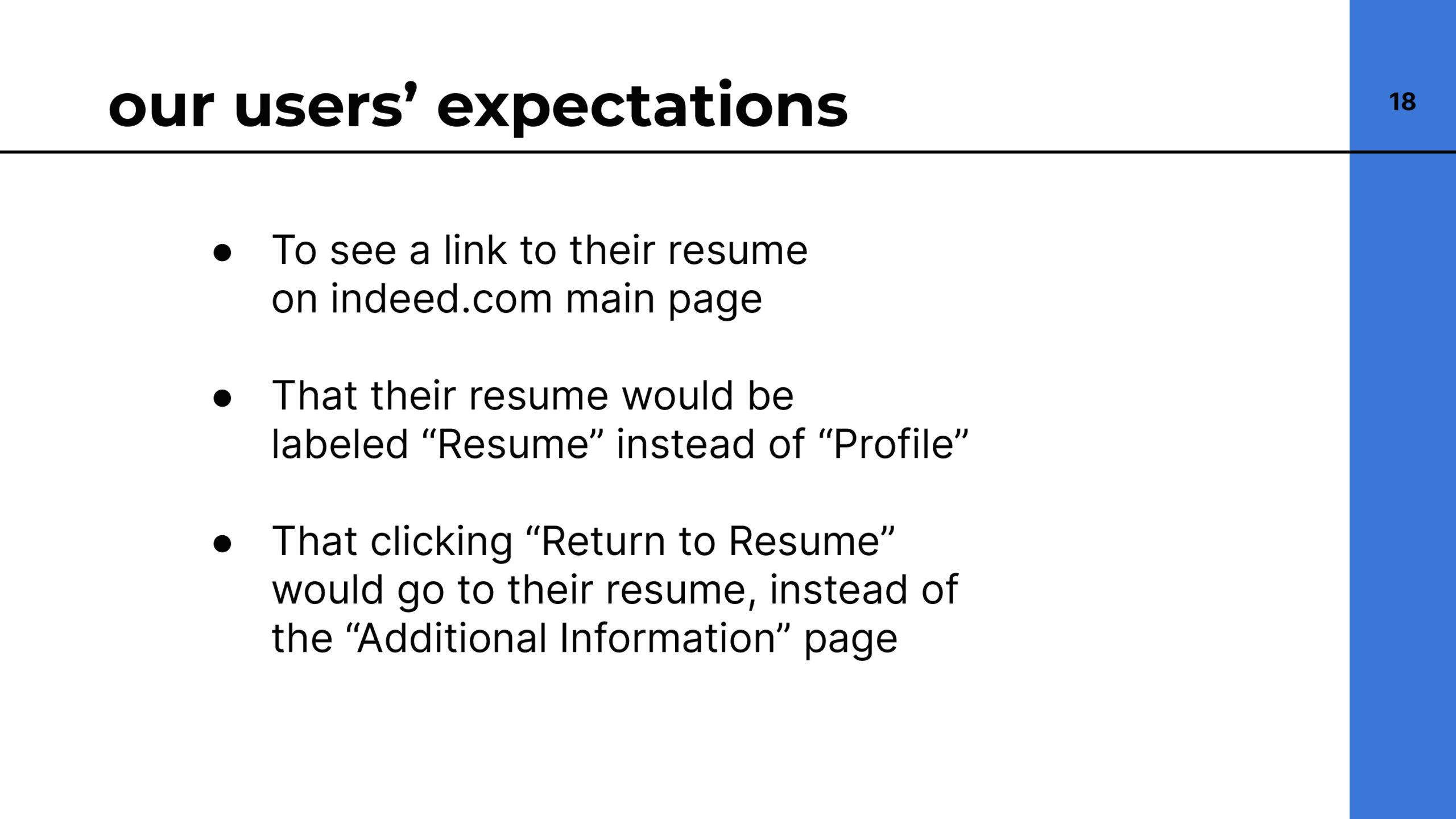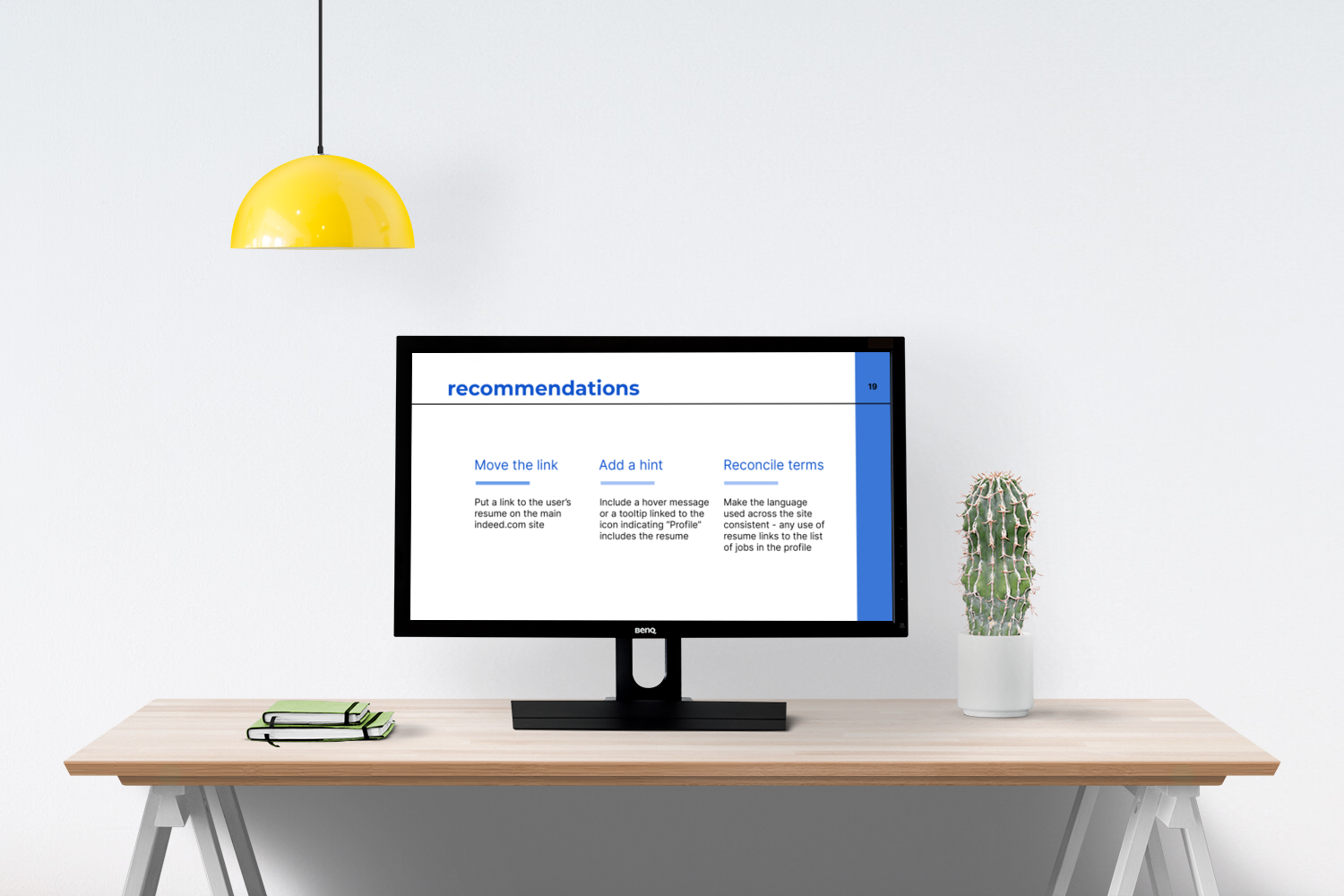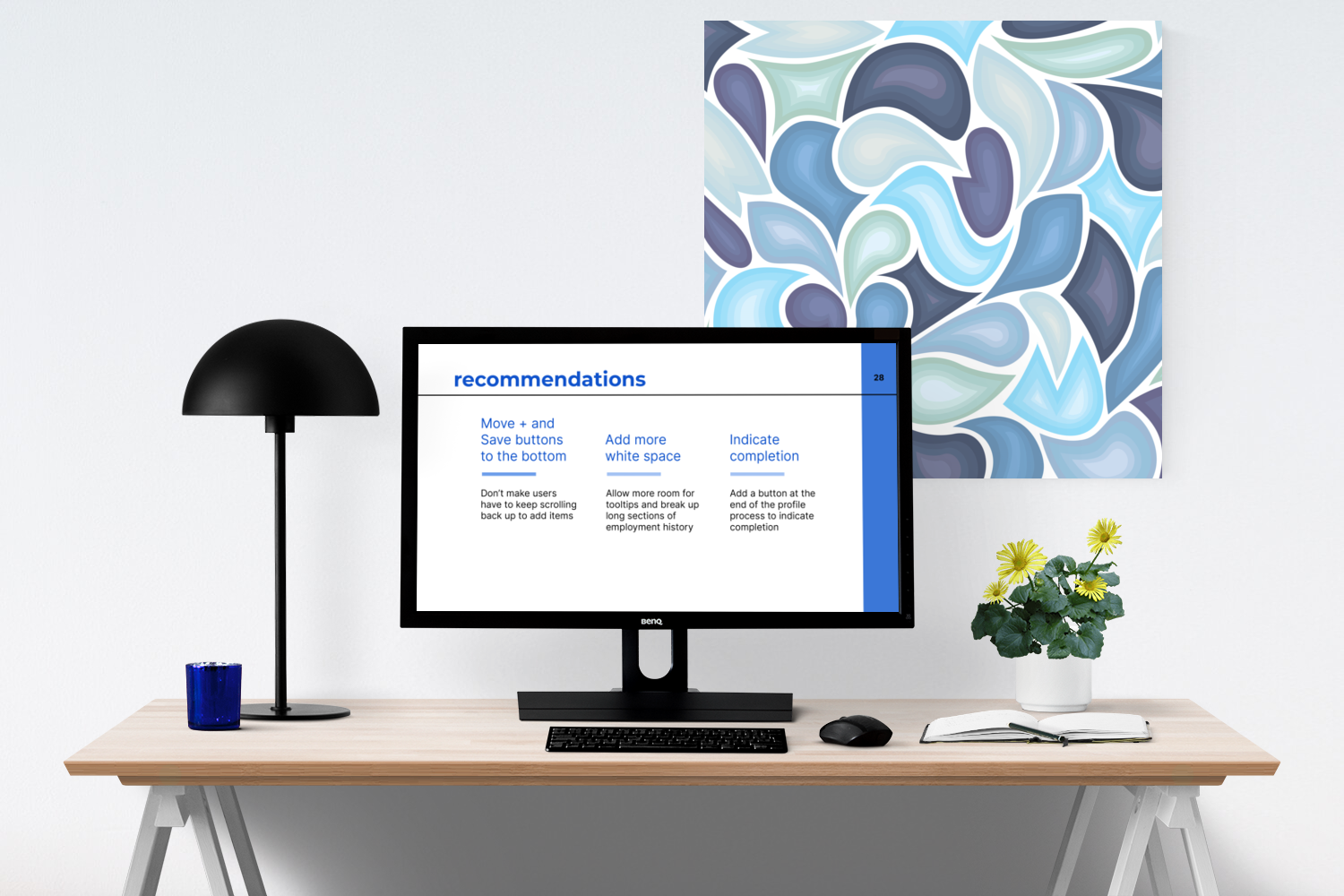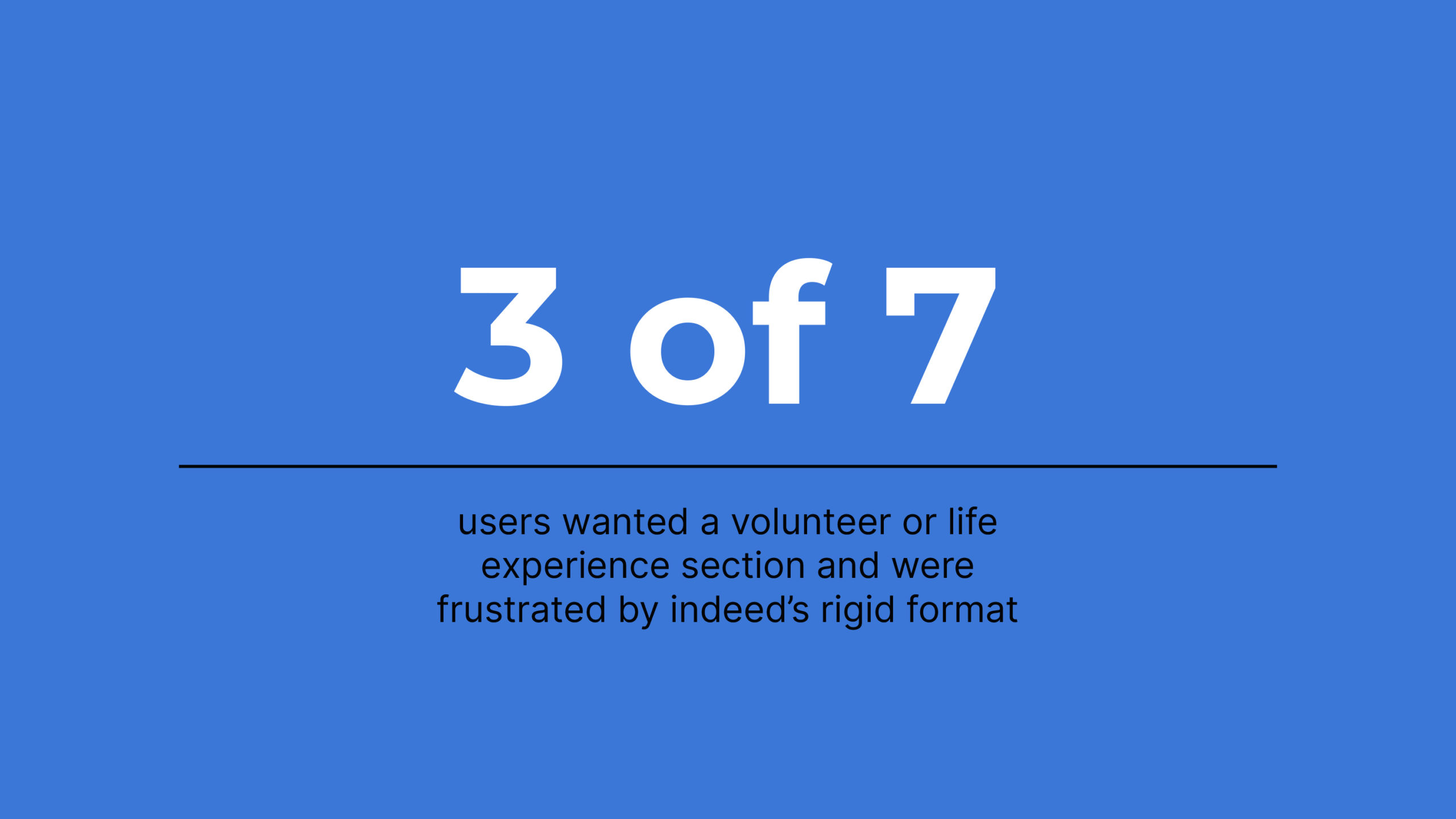Usability Testing indeed.com
The instructor for my user research methods course, Caitlin Rinn, is a user experience researcher for indeed.com, so she was our client for our first usability testing project in that course. My group opted to test the site with users aged 45 and up. In our background research into our demographic group, we realized that this group of users will probably become a larger share of the market for job search sites in the coming years, as the job market in the U.S. is aging due to a confluence of trends including the aging baby boomer generation, recent economic downturns, higher healthcare costs, and less stability of retirement savings. So, the ease of use for sites like indeed.com among older users will become more important as these users whom tech designers may not always consider a primary user group become a larger portion of the job search market.
Due to the COVID-19 pandemic, we had our users test simple tasks on indeed.com — uploading a resume, checking the computer scan for errors, fixing those errors, and then logging out and coming back to the site to make changes — virtually in moderated zoom sessions. While all of our users were able to create accounts and upload their resumes successfully, they found the process of editing their scanned results tedious, and two of our users were unable to find their resumes again later due to inconsistent language (resume v. profile) across their site experience. They also found several layout details that made their experience editing their information less efficient and more frustrating.
Client: Caitlin Rinn
Group Members: Sharon Bildstein, Leo Buser, Sarah Gilchrist
Professor Caitlin Rinn
IDIA 642: User Research Methods, The University of Baltimore
